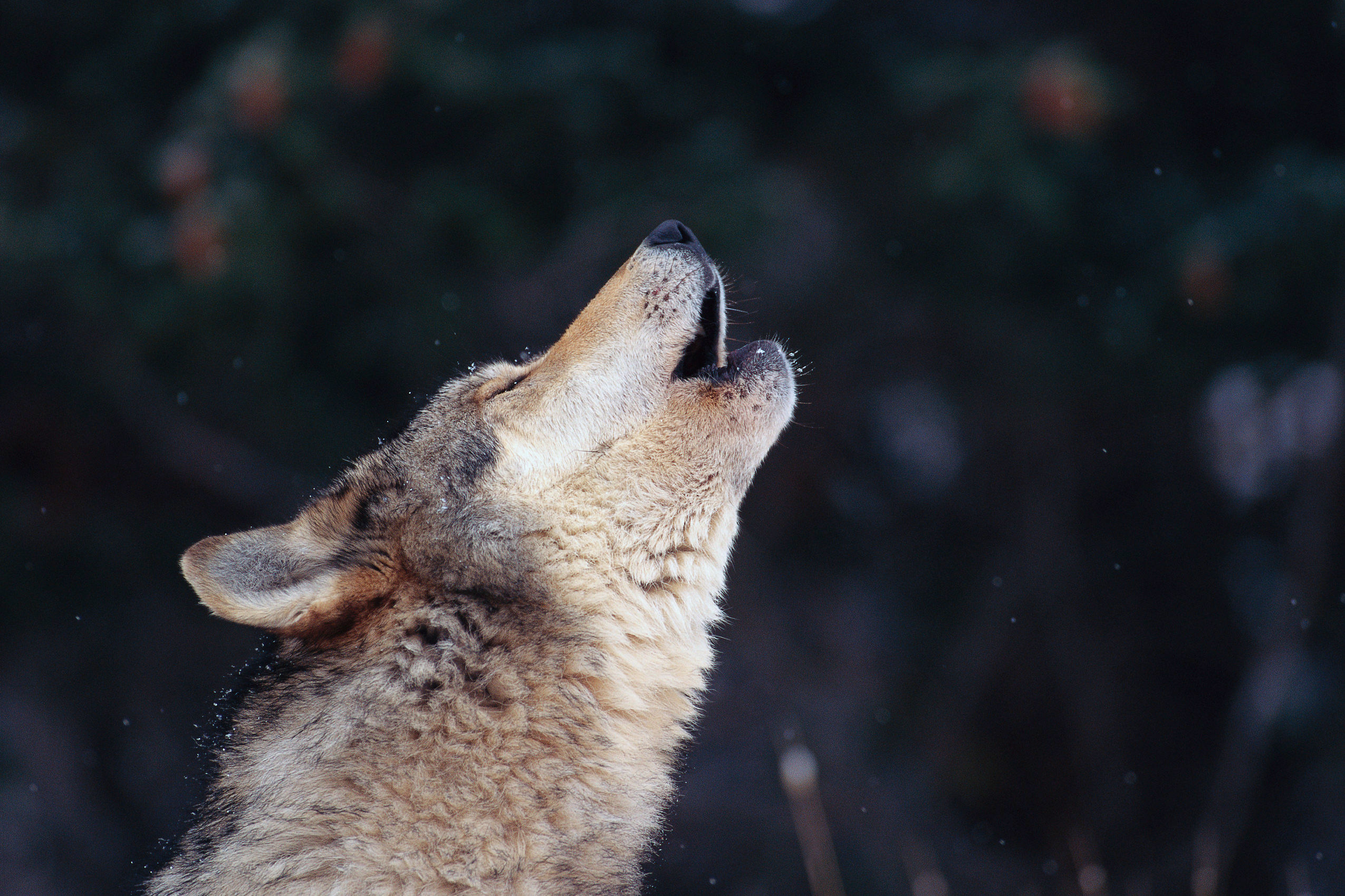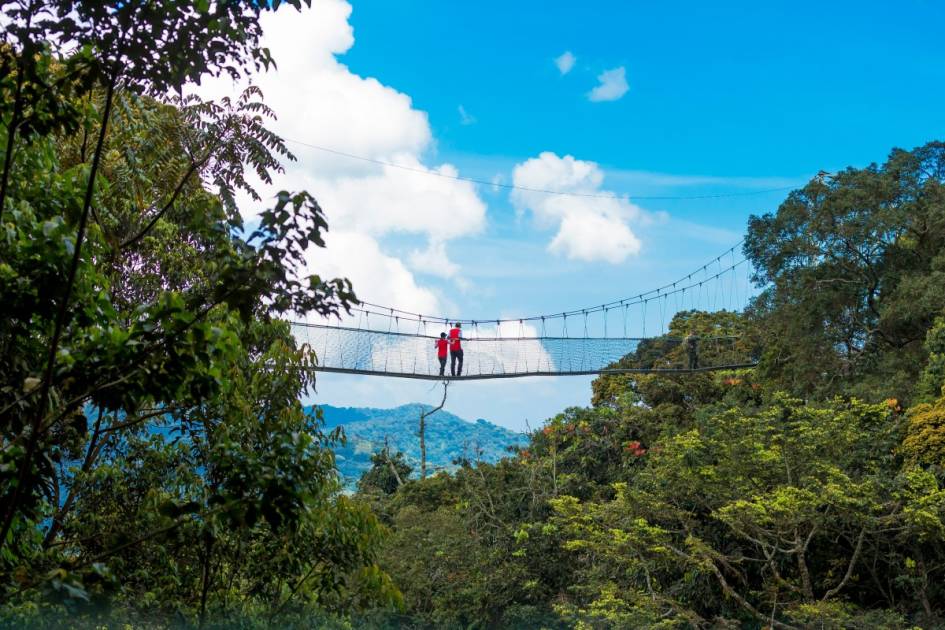There are no roads in the Mahale Mountains National Park. There’s not much else in the way of infrastructure, either. The park sits on the eastern shores of the enormous Lake Tanganyika, which is not only the world’s longest freshwater lake, but also the second deepest.
Both the Mahale Mountains and Lake Tanganyika sit on the western border of Tanzania - in an area not easily accessible to the public. The national park can only be reached by water or air, and the remoteness of the Mahale Mountains means that they don’t have anywhere near the footfall you might expect from an area of such remarkable nature - which is largely left to thrive.
It’s here that you’ll find the largest known population of eastern chimpanzees in the world.
"Mahale is an evolutionary triumph, where the clock seems to have stopped early, at the right time," wrote safari specialist and photographer David Anderson in his 2005 book On Safari. "It is a destination for the real adventurer."
Indeed, it’s not uncommon for visitors to have this 1,650km² park to themselves - or at least, to be the only humans on site. Behind the white-sand beaches of Lake Tanganyika and the densely-forested mountains - which stretch out of the water and soar to the skies - live leopards, lions, elephants, giraffes and giant pangolins. But the Mahale Mountains are best known for another animal. It’s here that you’ll find the largest known population of eastern chimpanzees in the world.

The main reason that most people who visit the Mahale Mountains do so is to see these chimpanzees. They patrol the narrow trails, swing through the hills, children on backs, and call to another from the branches. It's truly a majestic site.
Here’s our guide to visiting the Mahale Mountains National Park in Tanzania.
Where is the Mahale Mountains National Park?
The Mahale Mountains National Park is in the Uvinza District of Tanzania’s Kigoma Region, in the far west of the country. The park sits on the eastern shores of Lake Tanganyika - the world's longest freshwater lake - which separates Tanzania from the Democratic Republic of the Congo.
"Mahale is a biogeographically interesting region," wrote researcher Hiroshi Ihobe, who studied chimpanzees in the Mahale Mountains. "Its fauna includes both savanna-adapted species of eastern and southern Africa and forest-adapted species of western and central Africa and the Congo basin".
The Mahale Mountains National Park forms one part of what is known as the Western Circuit - a lesser-visited route in Tanzania which also includes visiting Gombe Stream National Park further north, and Katavi National Park in land.
Tracking Chimpanzees in the Mahale Mountains

The Mahale Mountains are one of the best places in the world to see chimpanzees in the wild. The park is very near the Gombe Stream National Park, which was made famous by the primatologist Jane Goodall and lies 175km north. But it’s here in the Mahale Mountains that the largest-known population of eastern chimpanzees (a sub-specie of the common chimpanzee) are found. It’s also one of very few places in the world where chimpanzees and lions coexist in the same habitat.
The chimps of Mahale have been at the centre of a study by Kyoto University for over five decades.
While a sighting of a wild animal can never be guaranteed, you’ve got a very good chance of spotting one in the Mahale Mountains National Park. They sleep high in the mountains, and guides will head out early to try and get a rough location for the day. You may see a chimp in the first 10 minutes of your hike, or you might have to climb the steep hills, to the higher parts of the forest. Either way, you’ll almost certainly hear the chimps before you see them.

There are various limits in place over how long you’re allowed to spend with the chimps in the Mahale Mountains (no more than one hour per group), as well as around group numbers (six people max) - and it’s a requirement to wear surgical face masks around the chimps. They can catch human illnesses, and those can be fatal, so good health is required for these hikes.
The chimps of Mahale have been at the centre of a study by Kyoto University for over five decades. They’ve followed groups of chimps in the park since 1965, charting changes in the alpha status, discovering the main predators of chimps (spoiler: lions) and recording an abundance of other fascinating notes - from how chimps use medicinal plants to the culture of their groups.

Over 300 academic papers have been published in English from the project, and over 400 articles and books in Japanese. It’s the university’s M-group that you’re most likely to see - a community of 60-strong chimps which have become accustomed to humans, and which researchers can identify by face and name.
Climb Mount Nkungwe (2,462m)
Most of the hiking in the Mahale Mountains National Park focuses on chimpanzees, but there is one particularly notable alternative.
The mysterious mountain peak of Mount Nkungwe will often form the backdrop for any far-reaching view out over the Mahale Mountains - though the summit may be shrouded in mist. Most hikes up Nkungwe are two or three-day affairs, with rough camping spots in between. It’s a demanding walk. In order to summit Nkungwe, you need to first climb Mt Mhensabantu and Mt. Humo.
The pay off is that along the way, you’re going to see an abundance of charismatic animals and the footprints they’ve left behind. The view from the summit then looks back down over the beaches around Lake Tanganyika, and out over the jungle ridgelines of the surrounding mountains.
Lake Tanganyika

The Mahale Mountains are so notable partly because they sit on the eastern shores of Lake Tanganyika, which is a huge pull in its own right. One of Africa’s great lakes, this is not only the longest freshwater lake in the world, but also the second oldest, the second deepest, and the second largest in terms of volume of water (Lake Baikal in Siberia is top of the pack for each of those three).
It is a destination for the real adventurer.
Lake Tanganyika drains into the River Congo, and is divided between area in Tanzania, the Democratic Republic of the Congo (DRC), Burundi and Zambia. Tanzania has the largest section of the lake (46%), and the DRC the second largest (40%). The border between Tanzania and the DRC sits in the lake.
Like the Mahale Mountains, the nature in this lake is thriving, in large part due to the remote setting. Lake Tanganyika is one of only 20 lakes in the world more than a million years old, and so life here has an ancient history. Many of the species are endemic. The lake is home to Nile crocodiles, hippos, terrapins and water cobras. It's because of those crocs in particular that snorkelling is only possible in selected locations. The lake is also home to 250 species of cichlid fish, and more than 80 species of non-cichlid fish, 60% of which are endemic.
How to get to the Mahale Mountains National Park?

You can only get to the national park by air or water. Flights (which leave from Dar es Salaam and Arusha) stop at the Katavi National Park en route to Mahale, and are best organised through the park and lodges.
Perhaps the most beautiful way to get into the park is human-powered.
If you’re going by water, the most common options are to charter a boat, take a lake taxi from Kalilani or Sigunga (though these can take more than a day), or take the MV Liemba, a passenger and cargo ferry which runs along the east of Lake Tanganyika. This is usually considered the most palatable option of these three, taking around 10 hours to reach Lagosa (on the northern edge of the park) from Kigoma. From there, you’ll need to organise a park boat in, or charter a fisherman’s boat.
Perhaps the most beautiful way to get into the park, though, (and the most affordable) is human-powered. Set off on a kayaking expedition from Korongwe or Karema, and in a couple of days the Mahale Mountains will come into view. When you round the point of Sibwesa, you’ll be staring into the park.
Accommodation

It’s common for those heading out on chimp-tracking treks to stay at Greystoke Mahale camp. The word ‘Greystoke’ comes from the fictional character John Clayton, Viscount Greystoke, better known by most as Tarzan. Here, there are beautiful thatched huts made from old ship timber, with open fronts, and there’s even a two-story bar looking out over the lake. There’s no electricity here, but there is some solar power. And no, of course, there’s no Wi-Fi.
Other options include the Kungwe Beach Lodge (a luxury lodge of tented bandas on a white-sand beach) and the Mango Tree Bandas, which is run by the government and offers five more-affordable units.
Best time to visit Mahale Mountains National Park?
This is a year-round destination, but it’s best to avoid March, April and early May, as they can be particularly wet. Visit anytime from mid/late-May to December and you’ll get good conditions to explore, with the winter months (from June-September) being the driest and so best for hiking. During June and July, you’ll also find that chimpanzees come down to feed around the lodges.
Is it safe?
Hiking, trekking and kayaking in any outdoor environment comes with its own inherent risks, but the trails of the Mahale Mountains are generally safe. This is a remote park, and so there are not many people here. Swimming and snorkelling can be dangerous due to crocodiles. Guides are essential and will keep you right - and of course, seek out any appropriate vaccinations required before going.
Inspired? Check out our wildlife watching holidays, including gorilla trekking on our Ultimate Adventure Through Rwanda.


